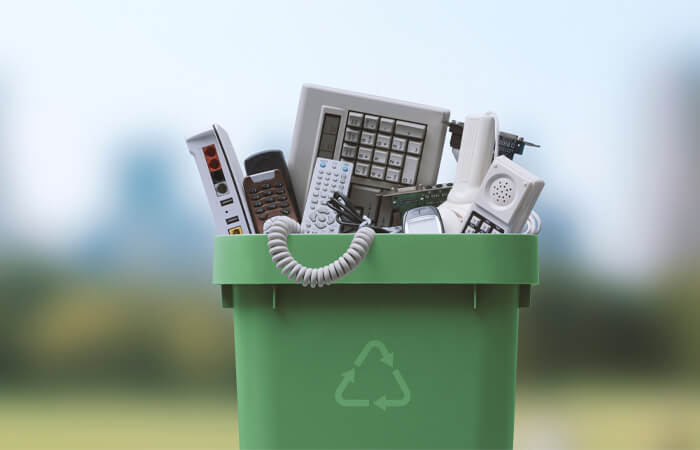Anyone who embarks on an exploration of the complex ecosystem that is electronic waste (e-waste) quickly uncovers the challenges met with its disposal, and the willful initiatives to diminish its impact quickly come to light. As the international community focuses its attention on sustainability, sectors across the board are undergoing momentous change. This article will explore the fundamental drivers pushing the industry toward more environmentally conscious practices, revealing the pivotal individuals and intricate dynamics guiding this noteworthy shift in perspective.
Sustainability emphasizes the uncertainty of consumer priorities. Though consumers may express a preference for ethically produced and eco-friendly products, their purchasing decisions often gravitate towards the latest, most appealing and most affordable options. Additionally, governmental participation and corporate influence also play significant roles by promoting adherence to regulations and maximizing investor expectations, respectively.
Corporate policies hold crucial significance for sustainability efforts. Notable brands, such as one known for its electronic devices, are aiming to incorporate sustainability into their supply chains, prompting many of their competitors to do the same. At the same time, smaller companies are prioritizing recycling materials for their devices. While the ease of establishing a sustainable supply chain tends to favor smaller enterprises compared to large corporations, nonetheless, mounting pressure is compelling all businesses to embrace sustainability.
Well-implemented regulations can play a pivotal role in reaching the desired level of sustainability. EU regulations, such as the “right to repair” and the standardization of charging cables, are examples of how such regulations can spur significant changes. This underscores that consumers' inclination towards sustainability has not yet solidified into a consistent preference.
From another perspective, the notion of responsibility among buyers requires a shift. Governments and businesses often collect used devices for recycling, assuming this is a responsible action. However, better alternatives exist. Frequently, recycling facilities become overwhelmed, leading to improper disposal or transfer of devices. The recycling process itself produces copious toxic emissions, underscoring the importance of extending device lifespans in the first place.
In developed markets, businesses frequently refurbish products for shipment to emerging markets. Yet, the potential benefits of prolonged use during the initial phase are substantial. This raises questions about the sustainability of exporting used products to regions lacking adequate policies or infrastructure.
Regarding sustainable purchasing, it’s evident that certain regions are outperforming others. This trend has prompted companies to adopt sustainability principles. For some brands, however, sustainability appears to be more of a compliance obligation than a core ethos.
Africa's Role and Challenges
As a continent experiencing rapid technological growth, Africa plays a significant yet complex role in the e-waste landscape. With limited infrastructure for e-waste management, informal recycling practices often win out, leading to environmental and health hazards galore. However, growing awareness of the issue has inspired innovative solutions, including initiatives to establish proper recycling facilities and promote circular economy models. Such innovation is a testament to how e-waste challenges are being addressed on a global scale.
A noticeable shift in perspective is occurring in specific enterprises, indicating a broader industry-wide movement towards sustainability. Nevertheless, there is always a risk of "greenwashing," the practice where companies may disproportionately highlight minor environmental endeavors compared to their overall business practices in an effort to gain favor.
Efforts are underway to address environmental and human rights concerns tied to minerals produced and used in the devices themselves. It’s important to transition from linear material usage to a waste-free model. Tracing mineral origins could incentivize responsible practices, potentially reducing the dependence on virgin materials.
The matter of finite resources further compounds the urgency of curbing e-waste and promoting the recovery of reusable materials. Emerging markets — often the primary sources of these rare minerals — are significantly impacted by e-waste. Consequently, there exists a strong motivation within these regions to address these issues, despite their current resource constraints.
In conclusion, the intricate interplay of consumer behavior, corporate policies, regulations and sustainability initiatives shapes the e-waste landscape. As the world grapples with environmental challenges, the evolution and transformation of both perceptions and policies are vital for a sustainable future.
